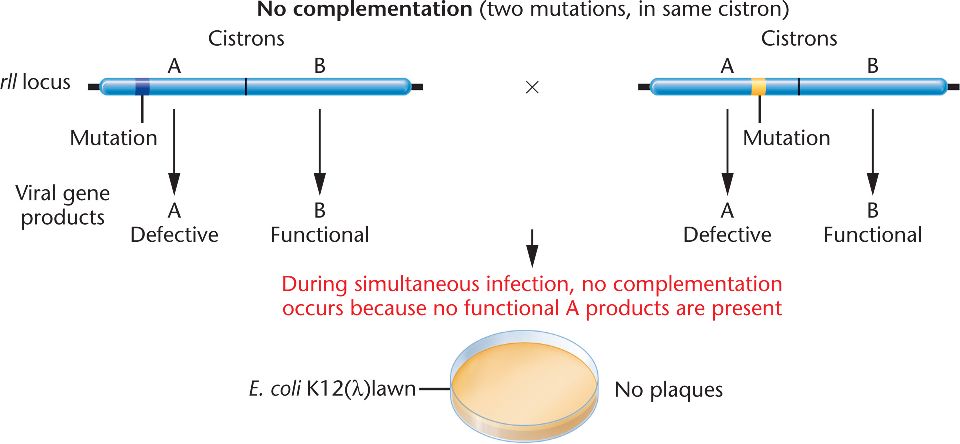
Two mutations in the same cistron do not complement one another, and produce no
wild-type phenotype.
The mutants are classified into two complementation groups,
or cistrons, A or B.
Today we know that these cistrons represent two genes
in what was originally thought as a single rII locus.
